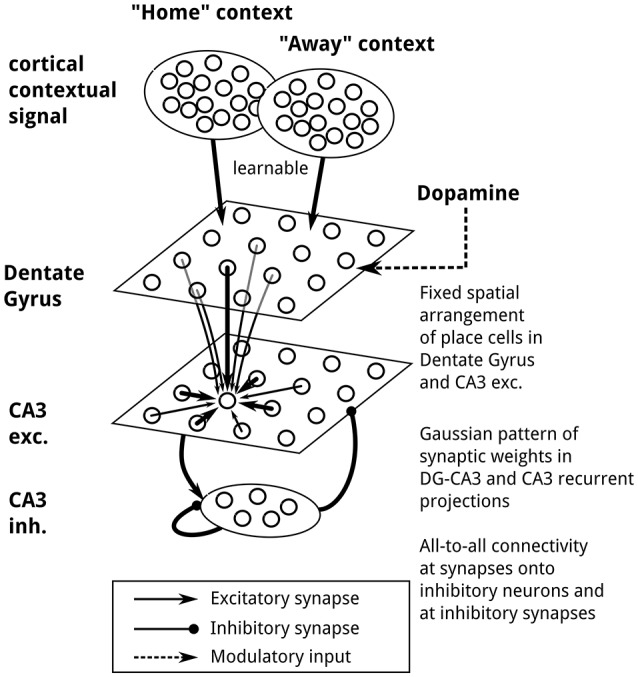Figure 2.

Network architecture. Two context populations of cortical cells project onto model DG granule cells, with connections modifiable by reward-dependent Hebbian plasticity. DG and CA3 cells are spatially arranged on a regular lattice, ordered by the position of place field centers. Connection weights between DG and CA3 place cells and between CA3 cells follow a Gaussian function of distance. CA3 place cells project to an inhibitory population featuring recurrent inhibitory connections and projecting back to CA3 place cells. During movement, place field activity in DG and CA3 cells is generated by external stimulation, and recurrent synaptic transmission is inactivated. Cortical “Home” context population, 6,400 neurons; cortical “Away” context population, 6,400 neurons; DG population, 6,400 neurons; CA3 excitatory population, 6,400 neurons; CA3 inhibitory population, 259 neurons.
